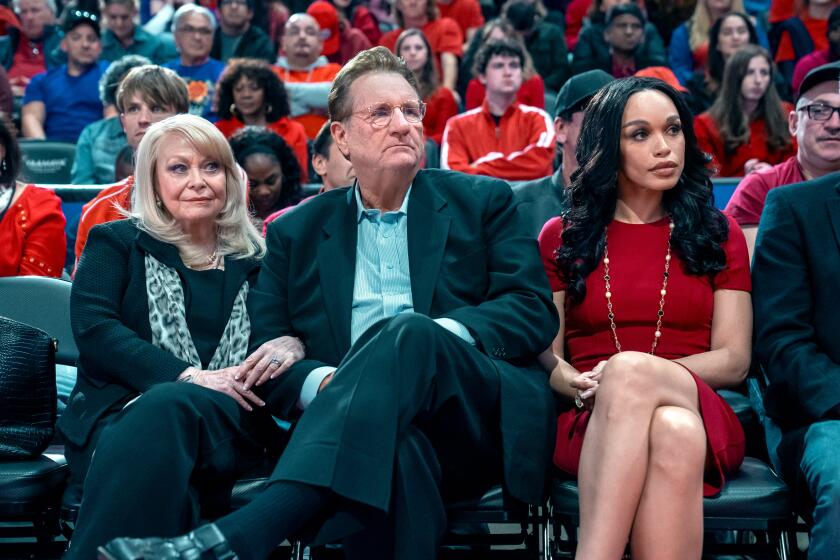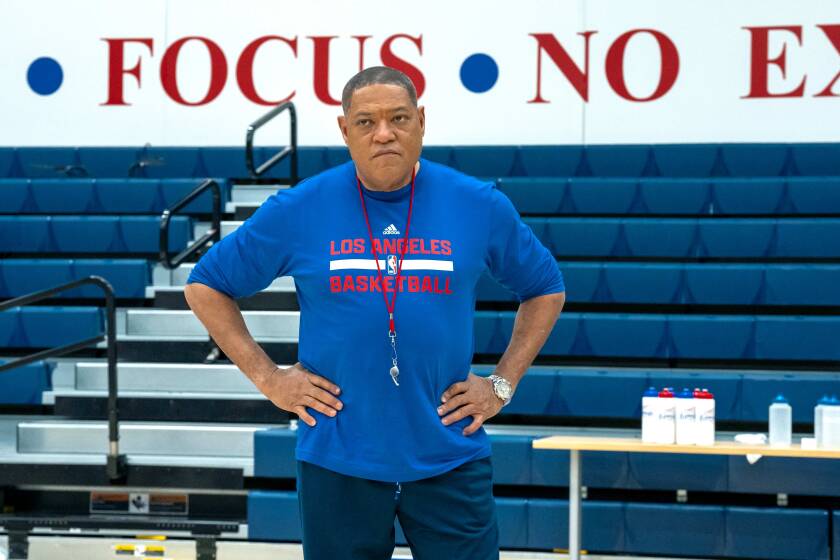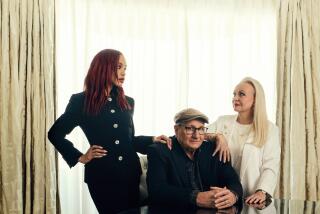‘Clipped’ shows why the team kept playing even after Donald Sterling’s tape went public
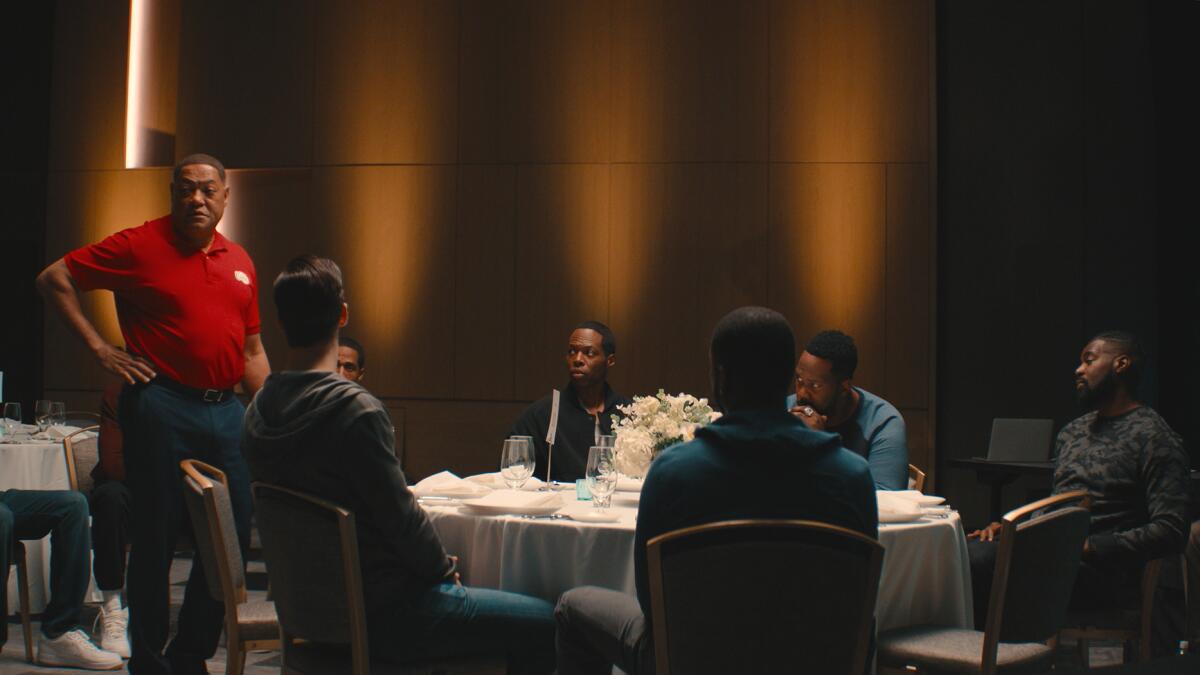
For three decades, the Los Angeles Clippers were the NBA’s laughingstock, a poorly run team with a woeful record. But the team’s owner, Donald Sterling, was more than inept — it was a barely kept secret that he was a bigot, with lawsuits against him from the Department of Justice, for housing discrimination as a landlord, to basketball legend Elgin Baylor, for alleged mistreatment while a Clippers executive.
Then in 2014, everything changed. Under Doc Rivers, the Clippers — led by Chris Paul, Blake Griffin and DeAndre Jordan — were suddenly a team competing to win an NBA title. But in the midst of their first round playoff series against the Golden State Warriors, a leaked tape exploded the relative peace, revealing Sterling’s hateful racism for all to see.
“Clipped,” FX’s series about the scandal, tracks everyone involved, including Sterling himself; his wife, Shelly; his mistress, V. Stiviano; his executives and his team. But one of the most important and powerful scenes is in Episode 3, titled “Let the Games Began,” that narrows the focus down to Rivers (Laurence Fishburne) and his players as they contemplate whether to boycott Sterling and the NBA playoffs or continue their relentless pursuit of a title.
FX’s “Clipped,” now streaming on Hulu, stars Ed O’Neill, Jacki Weaver and Cleopatra Coleman as the triangle at the heart of the 2014 scandal involving Clippers owner Donald Sterling.
Ultimately, the Clippers didn’t boycott, though at that night’s game they did protest by tossing their Clippers jackets on the court and wearing their warm-up gear inside out to show they were not playing for Sterling. Then the new NBA commissioner, Adam Silver, quickly banned Sterling. The Clippers won that playoff round but were bumped by the Oklahoma City Thunder in the Western Conference semifinals.
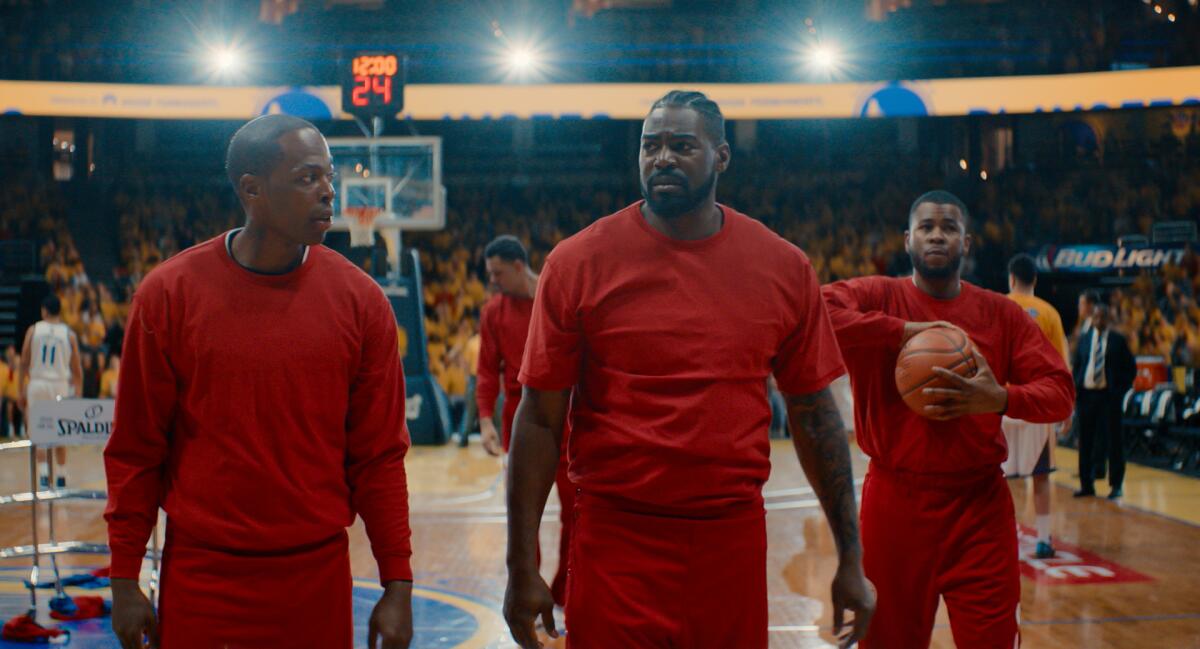
Still, Fishburne — who recalls that at the time he was not surprised that an NBA owner would hold Sterling’s views but was surprised that he faced real consequences — believes the team made the right move. “Playing was the more impactful, more honorable choice,” he says.
The team’s debate “is the nucleus of the show,” says J. Alphonse Nicholson, who plays Paul. “It’s a scripted series but we’re telling the truth and it felt real — this scene has a different weight.”
Fishburne says he understands the conflict and anger the players and Rivers must have been feeling. “As a successful Black American man, we are always carrying those internal feelings,” he says.
Showrunner Gina Welch says that resonance comes from “trying to understand the impossible and unfair choice these people had to make while they were getting all this pressure.”
Though there had been athlete activists in previous generations, from outspoken boxing legend Muhammad Ali to basketball great Bill Russell, times had changed. Welch notes that the Sterling incident and the team’s decision to stage a protest — but not an outright boycott — occurred before Colin Kaepernick began taking a knee during the national anthem as a way to speak out against police brutality and racial inequality. Austin Scott, who plays Griffin, says “athletes were still just expected to be athletes so this was new for them.”
The Times reported on the Donald Sterling scandal extensively in 2014 along with the fallout that ensued. Here is a look at some of our key coverage.
Sheldon Bailey, who plays Jordan, adds that the emotional arguments between the players “is really important because this social commentary really exists in Black America — it’s barbershop talk for real,” he says. “These were the conversations I had with guys in the gym or barbershops and we’re showing the players’ humanity, which will give people the chance to feel where Blake Griffin or Matt Barnes or DeAndre is coming from.”
Co-executive producer, Tracy Scott Wilson, who wrote Episode 3, said the scene was also foundational for pragmatic reasons. “Everything that happened after was a reaction to what happened in that room and referred to that scene,” she says.
The scene, which ultimately ran seven minutes, features more than a half-dozen speaking parts, with everyone seated around a hotel event room table, except Fishburne, who steps back to give the players space to talk and then steps back in to guide the discussion.
“It’s a frenetic episode so we wanted to invite the audience into a room and slow down and really talk about what’s going on,” Welch says, adding that from script to editing, she was always “so afraid somebody was going to say, ‘Yeah, it’s nice but we’re going to have to cut it down.’ But everybody protected the scene because everyone knew it was important.”
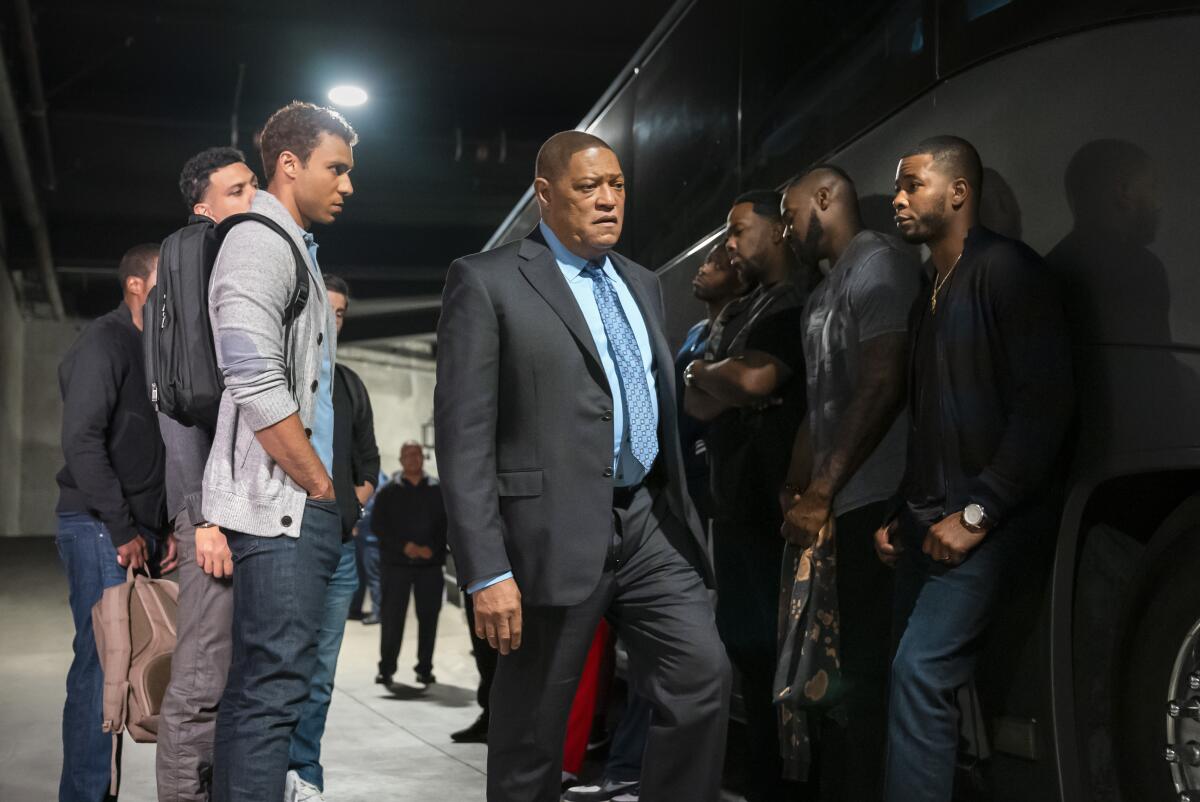
Finding the right tone was tricky, because its importance could turn it ham-fisted.
“Our early drafts felt too much like a debate, kind of like a ping-pong game with a pro argument, then a con argument, then the solution,” Welch says. “To feel realistic it needed to be driven by the emotions of the moment.”
Making it sound “organic and not like an opinion page” required letting it get “messy,” Wilson says, with players’ views shifting as the scene wore on. “We wanted the audience to be off-balance too.”
The writers room had a basketball consultant who helped find the specific attitudes for each player and for Rivers. “The biggest discussion was how to play Doc,” Wilson says. “We wanted him to actively listen and not just think he was going to change the players’ minds.”
Laurence Fishburne shines as Doc Rivers, but Blake Griffin’s portrayal and other elements of “Clipped” don’t accurately reflect the Sterling scandal.
Welch met with Rivers, as did Fishburne, who spent time with the coach — the actor even had Rivers over to a party at his home where he observed Rivers discuss Bill Russell’s career with Wynton Marsalis. Ultimately, Fishburne says the scene rings true because Rivers functions as “a good shepherd, who can lead from behind.”
(Scott says Fishburne as Rivers was crucial to the series and this scene. “Having someone with that gravitas and presence made listening and reacting really easy.”)
The actors also benefited from having shot two episodes together previously, Welch says. “By the time we shot this they understood how the dynamics of this incident had the players starting to strain and twist under the pressure.”
Charlie McElveen, who plays JJ Redick, the lone white player in the meeting, says he felt that pressure acutely. “As the only white guy in that room, I wondered, ‘What can I say and how much should I be talking,’” he recalls. “When Laurence came in, my heart was pounding. I was so nervous I wondered, ‘Am I acting?’ I didn’t even know if I could speak. It was totally weird.”
Upon reflection he realized that the lines between acting and life had blurred because he had come to feel a camaraderie with his castmates the way teammates do. “As the character I could see how affected [Redick was] by what this man had said, but also these really were my friends and I knew I’d be upset if it had happened to them,” he says. (He adds that when he recently watched the scene for the first time, his heart again started pounding.)
Bailey remembers hoping, back in 2014, that the team would boycott. Having shot commercials previously with both Paul and Griffin, he understood the dynamics. “I wasn’t mad at them but I wanted them to somehow put that stuff aside and stand up for what I felt was right,” he says. “But I wasn’t in their shoes.”
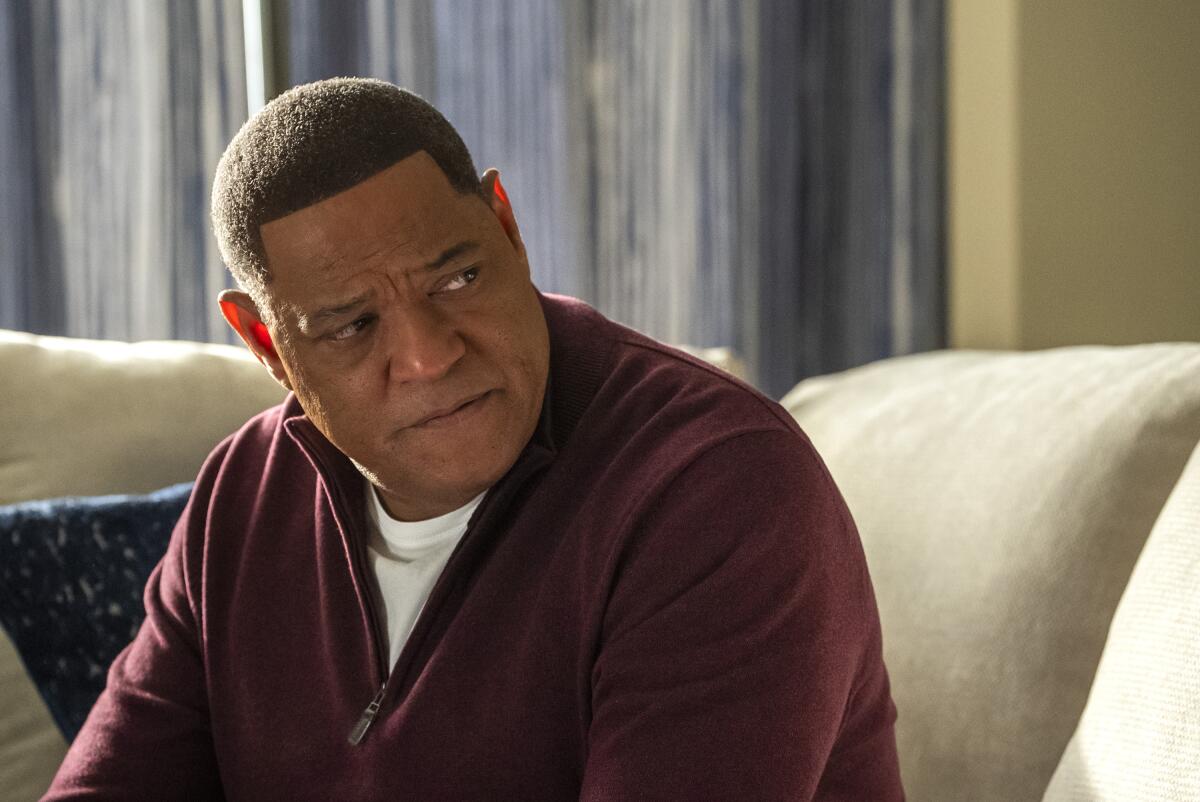
Still, he connected immediately to Jordan, the most forceful voice for that side. “Even while we were filming, I still was hoping they’d boycott,” he says with a laugh, adding that, “I love the scene because I appreciate all the different attitudes and the tension that is there.”
Scott says he came to understand Griffin’s reluctance to boycott, not just because of all the outside pushback from sponsors, agents and others, but because “he was so young and had been beaten down by Sterling’s behavior, which messes with your psyche to a point where your heart wants you to do something, but it’s very hard when you’ve been traumatized.” At the time of the scandal, Griffin was 25.
Ultimately, he says, the actors came away feeling that the players did what they felt was right given what they knew and were dealing with. “We can’t judge them for a single second,” he says. “Nobody should.”
The scene took all day to shoot even though the actors other than Fishburne didn’t move. “We all stayed calm and were just grateful we had that time to tell this story,” Nicholson says.
Bailey says he had never shot such a long scene before, especially while seated the whole time, “but the fact that we took that much time to get the coverage is why it worked.”
Scott agrees, and explains the directing approach. “They call it ‘going around the world,’ where they start on one person and move the camera around until they’ve gotten everybody,” he says. “And they did it twice through, so you had to stay engaged.”
The scene culminates with Rivers stepping back into the discussion and showing his players footage of Jesse Owens defeating the Nazis on the track at the 1936 Olympics in Berlin and of Tommie Smith and John Carlos with their raised fists as they got their medals at the 1968 Olympics in Mexico City. It was a way to show that success would be the best revenge while giving the players the biggest platform.
Scott and McElveen said they didn’t know they’d be watching the footage in the moment and found it immensely powerful. “That was our real-time reactions,” McElveen says, adding “that the part where he says, ‘If we want to really inspire people, let’s do it as champions’ still gives me goosebumps. When we were shooting and it was so visceral, you realized, ‘Something’s cooking with this scene.’”
More to Read
The complete guide to home viewing
Get Screen Gab for everything about the TV shows and streaming movies everyone’s talking about.
You may occasionally receive promotional content from the Los Angeles Times.
